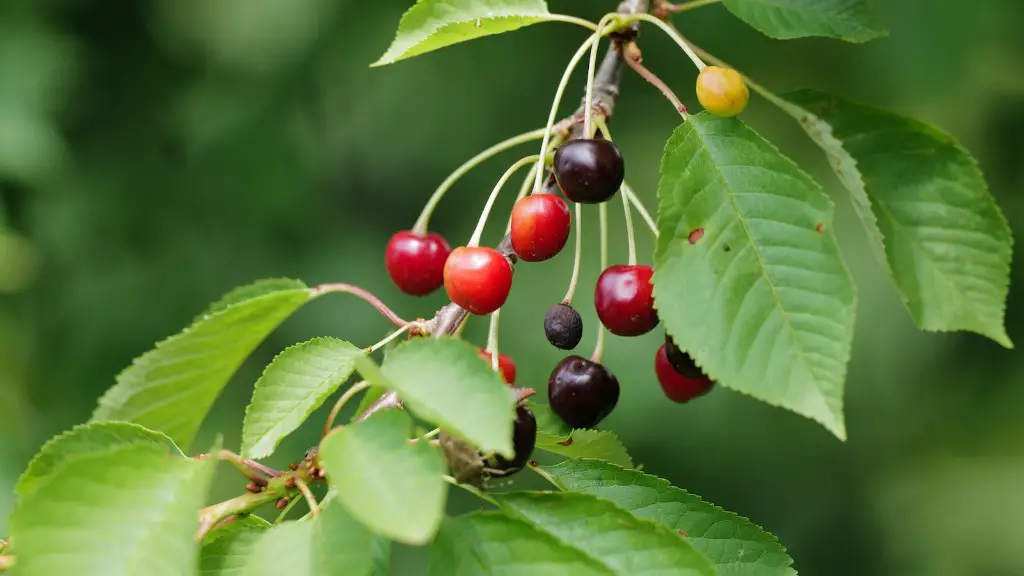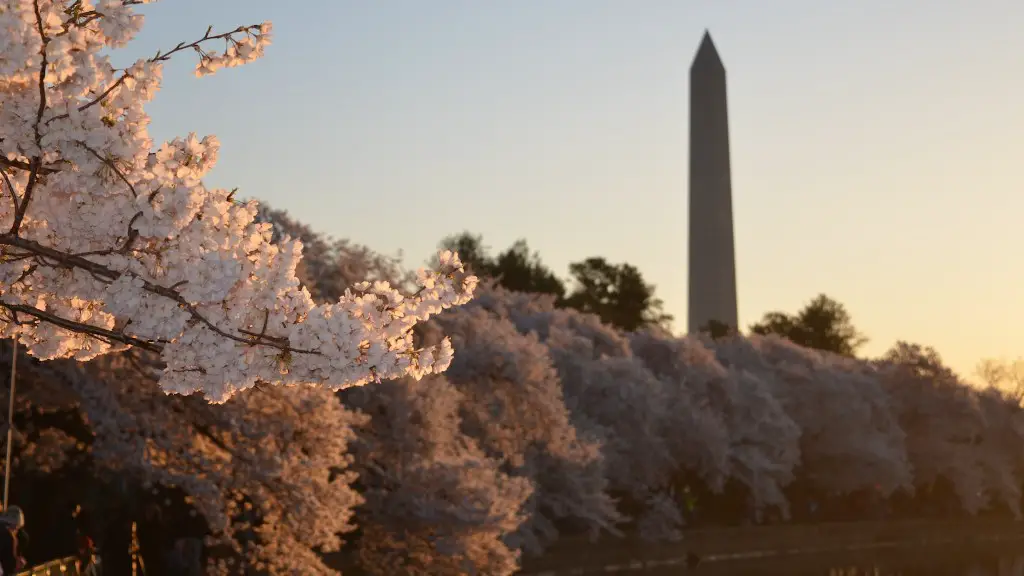Bare root fruit trees can be an exciting addition to any garden or orchard, and one of the most popular among them is the Dwarf Cherry Tree, a hardy, self-pollinating tree that produces sweet, tart cherries throughout the season. Planting a bare root tree is a simple process, though it’s important to be gentle with the fragile roots, and to ensure that the tree is planted correctly for good health and abundant fruit for the future. Here, we’ll walk you through the right way to plant a Dwarf Cherry Tree, starting with the basics.
Step 1: Choose Your Planting Site
The first step in planting a bare root Dwarf Cherry Tree is deciding where it will go. Choose a site with plenty of sun and good drainage; cherries prefer a minimum of six hours of direct sunshine each day. Avoid planting too close to other large trees and shrubs, as Dwarf Cherry Trees need plenty of room to spread their roots and get established. When choosing your planting site, keep in mind that Dwarf Cherry Trees can reach up to 10 feet tall, with a spread of up to 8 feet.
Step 2: Prepare the Soil
Once you’ve chosen your planting site, it’s time to prepare the soil. This involves mixing in organic matter like compost or manure, which will help to feed the tree and give it the nutrients it needs to thrive. Dig a hole slightly larger than the root ball of the tree, and fill your hole with the amended soil. Make sure the soil is firm and well-drained, as cherries can be susceptible to root rot if the soil is overly wet. Make sure to check the soil pH; it should ideally be between 6.5 and 7.5 for Dwarf Cherry Trees.
Step 3: Plant Your Tree
Now it’s time to actually plant your tree. Start by positioning the tree in the hole so that the roots are spread out evenly and the tree is standing straight. Fill in the hole with amended soil, gently tamping down the soil to remove any air pockets. Be sure to water the tree after planting, which will help to settle the soil and establish better root to soil contact. Your tree will begin to grow quickly once it is established.
Step 4: Prune Carefully
Once the tree is planted, it’s important to prune it correctly in order to encourage better fruit production and healthier growth. To prune a Dwarf Cherry Tree, start by removing any dead, diseased, or broken branches. This encourages healthy growth and reduces the risk of disease infection. Then, remove any competing branches, as well as any branches that are located too close together or are heading in undesirable directions. Lastly, stand back and take a look at the tree’s shape; correct any issues to create the desired shape of your tree. When done correctly, you’ll be rewarded with an attractive, well-shaped tree that produces abundant, juicy cherries.
Fertilizing and Mulching
Once your tree is planted, it’s important to remember to give it the nutrients it needs to stay healthy and productive. Fertilizing a Dwarf Cherry Tree should be done annually; adding a high-potash fertilizer during the spring time will help to boost flower production. Making sure your tree is mulched will also help to improve soil fertility and discourage weeds. A 2-3 inch layer of mulch is ideal, as it will help to retain moisture and protect the tree’s delicate roots.
Staking and Training
Dwarf Cherry Trees can benefit from staking and training while they’re young. Staking your tree will help to keep it upright and secure as it grows, while training can help to encourage the right shape, keep the tree a manageable size, and ensure that it doesn’t become spindly or heavy laden with fruit. When training, choose the strongest, healthy branches and prune the weaker ones.
Pest Prevention and Disease Control
Dwarf Cherry Trees are relatively easy to care for, but it’s important to monitor for pests and disease, as these can quickly cause problems. Check your trees regularly for any signs of insect infestation or disease. Be sure to remove any fallen leaves or fruit, as these can collect fungal spores that can cause diseases. It’s also a good idea to teach yourself what to look out for when it comes to plant diseases, so that you can spot any early warning signs and nip them in the bud.
Watering and Irrigation
Once your Dwarf Cherry Tree is established, it’s important to keep it supplied with water. Cherries require regular, deep watering in order to thrive. During the first few weeks after planting, you should water your Dwarf Cherry Tree every other day. Once it’s established, watering once or twice a week should be sufficient in most climates, depending on the amount of rainfall your area receives. If the summer is particularly hot and dry, you may need to water more often to ensure the tree’s health and well-being.
Proper Sunlight exposure
One of the most important aspects of caring for a Dwarf Cherry Tree is making sure it gets enough sun. Dwarf Cherry Trees need at least 6 hours of direct sunlight each day, so it’s important to choose the right planting site. If you live in an area with very little sunlight, you may want to consider planting a dwarf variety that is more tolerant of shade.
Prune for Faster Fruit Production
Pruning is one way to help ensure that your Dwarf Cherry Tree produces abundant fruit. Pruning encourages new growth and helps to control the size and shape of the tree. In the spring, remove dead or diseased branches and any competing branches. You can also thin out the branches to prevent overcrowding, which can interfere with fruit production. Pruning is a great way to keep your tree healthy and productive.
Harvesting and Enjoying Your Fruits
In no time at all, your Dwarf Cherry Tree will be producing abundant cherries. When the fruit is ripe, carefully pick the cherries off the branches, trying to minimize any damage. Enjoy the sweet, tart fruits fresh off the tree, or freeze them for later use. They can be used in pies and tarts, or simply enjoyed as a delicious snack.
Winter Care and Maintenance
Even during the winter, your Dwarf Cherry Tree will need to be cared for. Covering it with a cloth or netting during the winter can help protect it from damage caused by animals. You should also water it occasionally, if there is a lack of rain or snow. Additionally, applying a thick layer of mulch in the winter can protect the tree’s roots from cold temperatures, and will also help to add important nutrients and minerals to the soil.
Can and Should Dwarf Cherry Trees be Grafted?
Grafting is a common practice for many fruit trees, and Dwarf Cherry Trees are no exception. Grafting can help to improve a tree’s productivity and performance, as well as its resistance to various pests and diseases. However, it’s important to remember that grafting can be a complicated process, and is best done by a professional. It also requires regular maintenance, as the graft must be kept in good condition in order for the tree to stay healthy.
Harvest Your Cherries Safely and Responsibly
Harvesting your cherries is one of the most rewarding parts of owning a Dwarf Cherry Tree. However, it’s important to remember to harvest your cherries responsibly. If letting birds or other animals eat the fruit, be sure to position a net or fabric over the branches to protect the fruits from overindulgence. Additionally, when picking cherries from the branches, take care not to pull or break the branches to avoid damaging the tree.
Avoiding Common Mistakes When Caring for Dwarf Cherry Trees
It’s easy to make common mistakes when caring for Dwarf Cherry Trees, but with a little know-how, it’s easy to prevent them. First, avoid planting your Dwarf Cherry Tree too close to other shrubs or trees, as it needs space to spread its roots and grow. Additionally, be sure to watch out for any signs of pests or disease so that you can address any issues early on. Lastly, remember to water your Dwarf Cherry Tree during the summer months and to protect its roots during the winter with a deep layer of mulch.




